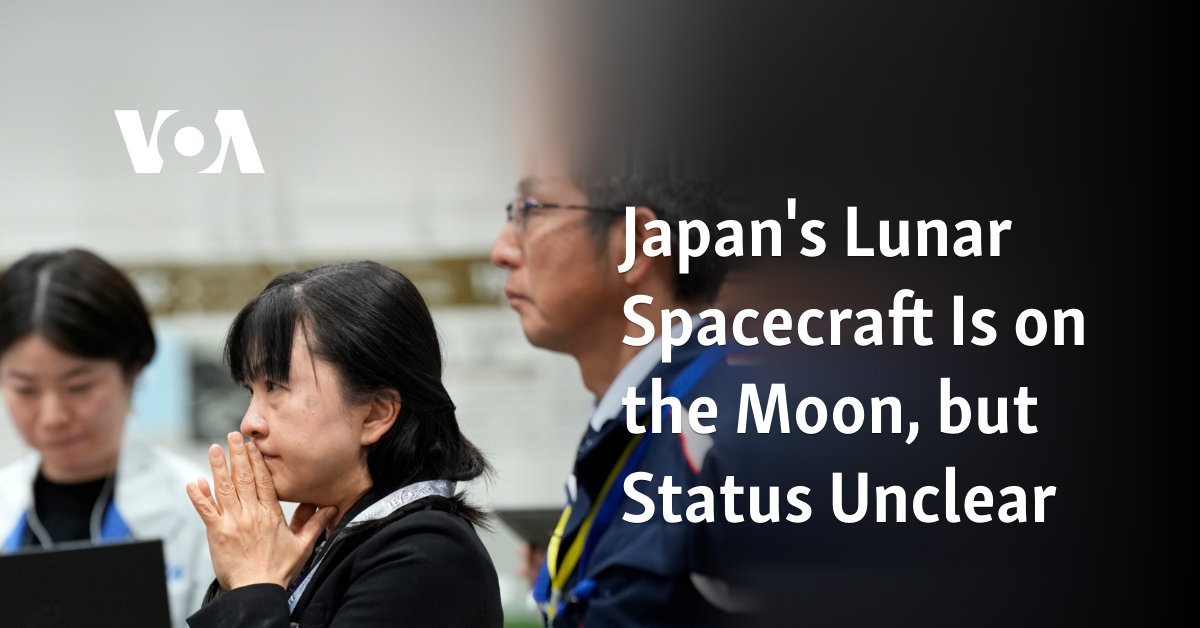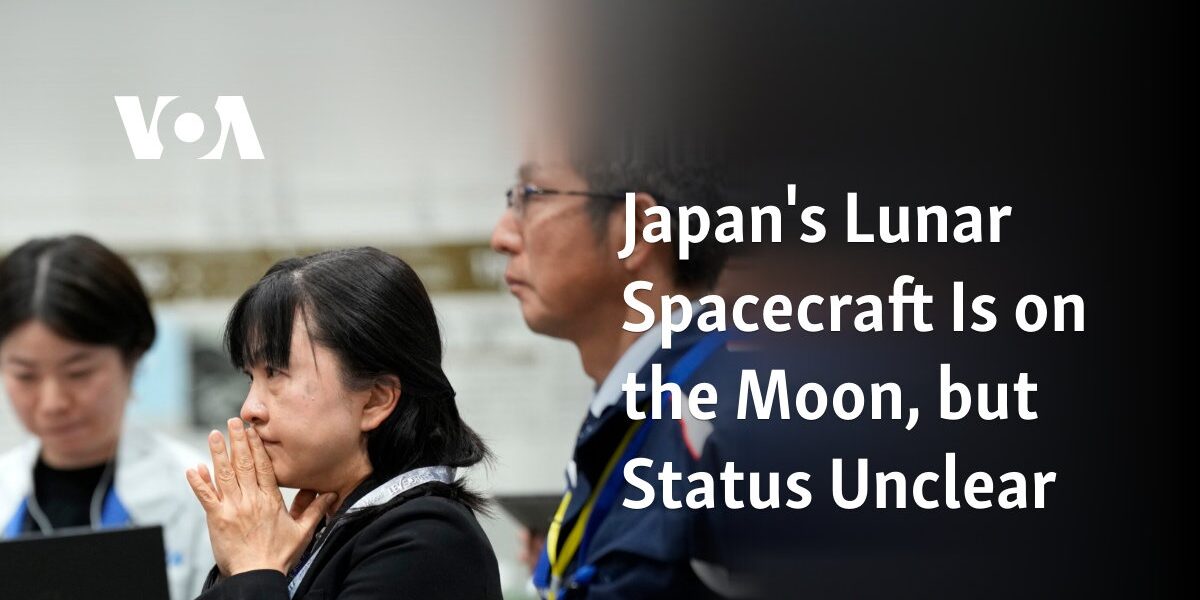 tokyo —
tokyo —
On Saturday morning, Japan’s spacecraft successfully landed on the moon’s surface. However, the Japanese space agency has yet to confirm if the landing was a success as they are currently checking its status.
Officials announced that further information regarding the unmanned spacecraft would be disclosed during a press conference. In the event of a successful landing by the SLIM (Smart Lander for Investigating Moon), Japan would join the ranks of the United States, the Soviet Union, China, and India as the fifth country to achieve this milestone.
At approximately 12:20 a.m. on Saturday in Tokyo (1520 GMT on Friday), SLIM landed on the moon’s surface.
According to the Japan Aerospace Exploration Agency’s mission control, the spacecraft successfully descended and SLIM was confirmed to be on the lunar surface. However, there was no mention of the landing’s success.
The control center continuously stated that it was “verifying its condition” and that further details would be provided during a press conference. The exact start time of the press conference was not immediately known.
The spacecraft known as SLIM, also referred to as “the Moon Sniper,” began its descent at midnight on Saturday. Within 15 minutes, it had reached a distance of approximately 10 kilometers (equivalent to six miles) from the surface of the moon. This information was reported by JAXA, the space agency in charge of the mission.
The lander was descending vertically at an altitude of five kilometers (three miles), and once it reached 50 meters (165 feet) above the surface, JAXA stated that it was expected to move in a parallel direction to locate a suitable landing spot.
Approximately 30 minutes after its expected arrival, JAXA reported that they were still in the process of verifying the condition of the lander.
SLIM, which was aiming to hit a very small target, is a lightweight spacecraft about the size of a passenger vehicle. It was using “pinpoint landing” technology that promises far greater control than any previous moon landing.
Instead of using landing areas that are typically 10 kilometers wide, the SLIM probe specifically targeted a smaller range of 100 meters.
The project was the result of twenty years of effort in precision technology by JAXA.
JAXA’s main objective for this mission is to experiment with innovative landing technology that would enable moon missions to land in specific locations rather than settling for easier landing spots. In the event of a successful landing, the spacecraft will gather information about the moon’s origins and utilize a specialized camera to study minerals.
The SLIM aimed to land near the Shioli crater, an area covered in volcanic rock, and was equipped with a padded cushion to absorb impact.
The highly anticipated mission occurred just 10 days after a previous moon mission by a private American company was unsuccessful due to a fuel leak that occurred hours after the launch.
On September, SLIM was sent into space aboard a Mitsubishi Heavy H2A rocket. It initially circled around Earth and then entered the moon’s orbit on December 25th.
Japan is aiming for a successful venture in order to regain trust in its space technology following several unsuccessful attempts. In April, a spacecraft created by a Japanese corporation crashed during an attempted lunar landing, while in March, a new flagship rocket was unsuccessful in its first launch.
JAXA has a history of successful landings in challenging situations. In 2014, their spacecraft Hayabusa2 landed on the 900-meter-long asteroid Ryugu twice and retrieved samples that were later brought back to Earth.
According to experts, if SLIM successfully lands precisely on the moon, it would increase Japan’s reputation in the competition for advanced space technology on a global scale.
According to Takeshi Tsuchiya, a professor of aeronautics at the University of Tokyo’s Graduate School of Engineering, ensuring the precision of landing on a specified location is crucial for the advancement of lunar exploration.
The speaker stated that it is crucial to demonstrate Japan’s advanced technology in order to solidify its position in lunar development. According to him, the moon holds significance for resource exploration and can serve as a launchpad for future missions to other planets such as Mars.
SLIM is transporting two compact self-governing probes – LEV-1 and LEV-2 lunar excursion vehicles – that were scheduled to be deployed right before touchdown.
LEV-1’s purpose is to capture footage of SLIM’s landing using its antenna and camera. LEV-2, a spherical rover created by JAXA, Sony, Tomy, and Doshisha University, is equipped with two cameras for this task.
Source: voanews.com




